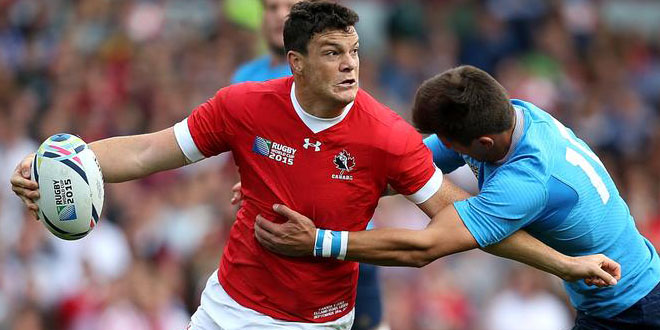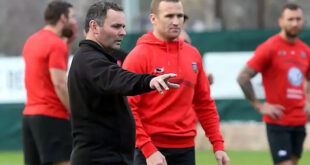Patrick Johnson of The Province recently wrote his own autopsy of where Canada’s senior men’s rugby team stands after the 2015 Rugby World Cup; towards the end asking the incredibly important and disturbing question:
“Why would they?”
Why would a new generation of aspiring young athletes make enormous sacrifices, with no financial rewards, in order to represent their country at the Rugby World Cup or elsewhere? The obvious answer is that they won’t and shouldn’t have to. The bar for success, for both player and country, has always been getting increasing amounts of young Canadian men into professional clubs overseas, where their development and financial security are assured. I offer a different but no less important question:
“How can they?”
The solution may be closer at hand than many realize. Building a ‘For-Profit’ model into Canada’s player development systems could be the magic bullet that at once brings more players and more money to Canada’s Centre of Excellence. Canada already has a player development machine that’s winning its backs and sevens players critical acclaim from the wider rugby world. What is needed is a similar machine for building forwards; the kind of hulking men who can stand toe-to-toe with the likes of Italy and Romania and win the kind of matches Canada fell agonizingly short in during recent weeks.
There are two issues. Big athletic forwards and the money to train them are both in short supply. But what if we could use one problem to help solve the other?
Players like Doug Wooldridge and Ray Barkwill gave up years of their life to train in Langford but too often they were doing so in isolation – working alone and pumping iron – while Canada’s sevens athletes took to the pitch with an entire squad to train in real game situations. To develop, Canada needs more of these forwards and colleagues for them to train with. There need to be multiple packs on site if players are to practice scrummaging, defense, and other essential skills against live opposition.
Once again, Canada has too few big men and a lack of funding to support them. If I may be so bold as to ask a hard question, why do all of the players training at our facilities need to be Canadian? Across North America there are already several highly successful private academies developing young rugby players for profit, and you can be sure those academies care nothing about what passports their athletes hold.
Canada’s National Senior Men’s Team is about to enter into the new Americas Rugby Cup competition with Argentina, Uruguay, USA, Brazil, and Chile; nations largely known for their tight five culture and forward play. Presumably these nations will also have pools of players that cannot be funded to train domestically – in the same way Ray Barkwill could not (causing him to train in Australia for years using his own resources). Why couldn’t a young Seattle-based prop or a Uruguayan second row make up the numbers alongside Canada’s elite domestic players – and pay for the privilege?
Before dismissing such a radical idea, it’s important to remember that there is already a significant track record in this country of wealthy families funding their child’s ambitions to build a career in professional sport. For example the Mackenzie brothers emerged from the elite independent school of Appleby College in Ontario, while Djustice Sears-Duru attended Shawnigan Lake School on Vancouver Island.
It’s true that there may not be enough Canadian families willing to pay to land their son a chance to train alongside Canada’s best rugby players, but I ask again – why must everyone training at Canada’s Center of Excellence be Canadian? What if the family of a wealthy Mexican Sevens player wanted to fund their son’s Olympic dream by granting him access to Canada’s development systems? What if, in preparation for a summer tour against Argentina, the Chilean national team wanted to send an entire front row to Canada for months on end to build up their skills and their bodies?
Canada’s Centre of Excellence has a record to stand on, having developed international stars like John Moonlight, Phil Mack, and the high-flying Ciaran Hearn, the latter who dazzled critics and fans with his play at the World Cup. It’s a resource many might be willing to pay for. Every dollar brought in from such a system could go to attract and fund players who can’t pay their own way; the kind of players Canada is currently missing.
If the revenues from a For-Profit player development system paid to develop a continuous flow of Canadian forwards and put them on professional teams, this country’s most glaring weakness on the rugby pitch would largely be solved. No longer would there be hundreds of young Canadian boys sitting at home with their families asking the question:
“Why would I?”
Instead, Canadian scouts and recruiters – with money in their pockets – could be more optimistic:
“When can you start?”
Guest Editorial By Jeff Hull. Jeff is a long-time rugby writer who has previously contributed to outlets like Rugby Canada, Bleacher Report, and The Province’s Try & Tackle Podcast. Follow him on Twitter: @HullatHome
 Americas Rugby News Rugby news from across the Americas!
Americas Rugby News Rugby news from across the Americas!




